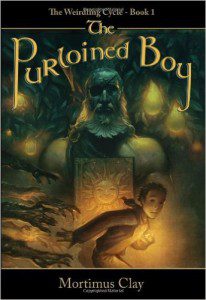
I’ve had a small measure of success writing fiction for young adults. What I mean by success is some people have actually read my stuff and have seemed to like it.
Art is long and life is short. I don’t recall where I heard that. It’s too good not to have been coined by someone I should know. Regardless, it is true for me.
I’m working on a series. That’s dangerous because publishing a book is a promise of more to come. The first book in my series came out in 2009. I thought I could get the second book published in 2010. I was wrong. I’m finally finishing it up this year.
Life intervened, that and another book, this time nonfiction (that will hopefully be out soon, when it is, you’ll be one of the first to know). But I’m working hard on wrapping up book two, and as I do I can’t help but think about what I’m doing. I enjoy it enough that I think I would do it even if I didn’t have anyone to share my stories with. There’s something God-like about writing fiction. It’s intrinsically satisfying, at least for me.
Writing Character
I suppose you could say writing fiction comes down to weaving three things together: setting, plot, and character. I enjoy spinning each of those threads, but the most important is probably character.
Stories that are mostly about a mood, or a plot can succeed. But those stories can only be enjoyed while the book is open. But memorable characters can travel with you and keep you company as you tell the story of your life. They can even giving you advice. You can always ask: WWGD? “What would Gandalf do?” (He may even answer.)
The word character comes down to us from the Greek through French. Originally it referred to a stamping tool, something that made an impression and identified either the object, its origin, or its maker. That’s rich. Making an impression is certainly what I’m trying to do when I write character, both on the page within a story, and also upon the reader.
In order for a character to impress you need things to identify him by. And while a character may change over the course of a story, some things need to remain consistent. Here’s a little glimpse at how I go about it.

Protagonists verses Supporting Characters
It is harder to write protagonists than it is writing secondary characters. There are a couple of reasons for this. One, you are generally telling the story from the perspective of the protagonist. This means you need to know him better, what’s more, you need to sympathize with him. (If you can’t do that, how will the reader?)
This doesn’t mean he always does the right thing, or even the wrong thing for the right reason. But you still need to care about him. If you don’t, you’ll feel a need to either abandon him or punish him. Now punishing him can be ok, just so long as he comes out of the experience a little better for it.
This brings up something else about protagonists, they need to grow. If there isn’t some inward movement to go along with the outward movement of the plot, you may actually feel like you have out-grown your hero. That has a way of undermining sympathy for him.
There may be blockage to growth in the story, but there must be good reasons for the blockage, reasons we can sympathize with. If he’s just obstinate or stupid, you’ll end up wanting to punish him more, and so will the reader.
Supporting characters are easier to write, and a little more fun too. Because they’re supporting the protagonists, you can make them larger than life. Dickens, excelled in providing insight into the natures of secondary characters through their names. I’ve tried the same thing. My protagonists are named Trevor and Maggie–names conveying a certain feeling, yet they’re somewhat generic–but the names of my secondary characters are like caricatures. Here’s a sampling of some of the more outlandish from the second book in my series: Mother Root, Professor Winkle Bustlebottom, Widow Krinklemiester, Colonel Uberbind, Sabnock, and Mr. Gourmand.
Secondary characters can also make their impressions upon the reader by their eccentricities: their gestures, their ways of speaking, their clothing. A lot can be communicated about what they want or what they fear with a light touch, an adjective here, a verb there. These things have a way of sticking to the character throughout the story. No need to keep repeating them after that. It becomes tedious if you do. A little reminder here and there may be necessary, but more than that will over-season the dish.
The Character of Our Lives
I don’t think it is possible to write or to read fiction without being judgmental.
When we judge the merits of a plot, or a setting, or a mood, we’re judging the author. But when it comes to character, while the artist can still feel the heat, you can’t help but judge the characters themselves. You either like a character or you don’t, you either admire and want to emulate him, or you condemn him, even by indifference.
Telling the truth through fiction is a very subtle thing. At one level the story is a fabrication, and by necessity, a falsehood. Somewhere I read a remark by an old fundamentalist on fiction–“A novel is nothing but a well told lie.” He had a point. But paradoxically fiction can also tell the truth. I think Jesus’s parables tell the truth. But I also think he made them up.
But I don’t think a story has to be a parable to tell the truth. Truth is everywhere you look, even in our characters. What I mean is the characters you and I make upon our lives. We make impressions with our gestures and our deeds. We tell our stories and often those stories make impressions on the people around us.
Here’s my parting thought. Please recall, a protagonist should develop as the plot of his story develops. In a good story the protagonist changes, hopefully for the better.
But here’s the trick: we must play many characters in our lives: we’re writers, protagonists, and critics.
But we’re not alone in any of these things. And when it comes to the critics, we’re not the last to judge.












